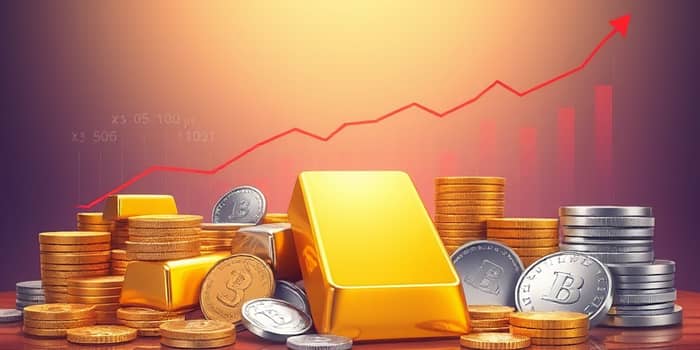
In an era defined by persistent price pressures and currency volatility, investors are once again turning to the age-old allure of precious metals. From gold to platinum, these tangible assets have reclaimed their status as bulwarks against eroding purchasing power. As central banks continue to expand money supplies and inflation remains stubbornly elevated, understanding the dynamics behind this rally becomes essential for anyone looking to safeguard wealth in 2025 and beyond.
Global inflation rates have lingered near multi-decade highs, driven by accommodative monetary policies and ongoing supply chain challenges. In response, central banks have accumulated vast reserves of gold, viewing it as a time-tested store of value that cannot be printed at will. This flight to safety underscores the intrinsic scarcity of precious metals and their global recognition as monetary anchors.
Unlike paper currencies, which can lose purchasing power through depreciation, gold and silver serve as safe havens during periods of economic and geopolitical uncertainty. Platinum and palladium, while more sensitive to industrial cycles, also benefit from this overarching narrative, gaining support as investors seek diversification beyond traditional asset classes.
Mid-year 2025 saw gold trading at an all-time high of $3,250 per ounce, while silver approached $32.60 per ounce. Palladium hit $1,121.50 per ounce after surging on supply constraints, and platinum remains attractively priced relative to its peers. Analysts forecast further upside for all four metals:
This breakout performance reflects both speculative interest and fundamental drivers. Silver’s dual role as a monetary asset and industrial input has fueled an industrial demand surge, while palladium’s tight mines and robust auto-catalyst needs have created supply deficit expectations.
Periods of systemic banking instability or geopolitical tensions tend to redirect capital into precious metals and related exchange-traded funds. The global economic landscape remains peppered with flashpoints that can ignite sudden safe-haven flows, from regional conflicts to sovereign debt concerns. Investors increasingly view physical metals as an insurance policy for preserving purchasing power when paper assets falter.
Central banks have added over 1,200 metric tons of gold to their vaults in the past decade, a testament to the enduring appeal of non-yielding assets when fiat currencies are under pressure. This accumulation trend adds a structural demand layer that supports prices over the medium term.
While the narrative for precious metals is compelling, several headwinds remain. A resolute central bank tightening cycle that pushes real yields higher could pressure gold. Platinum and palladium face structural risks from the accelerating shift to electric vehicles, which reduces reliance on catalytic converters over time.
Volatility spikes are common in metal markets. If inflation metrics cool faster than expected or the dollar strengthens, swift price corrections can occur. Alternative hedges—such as Treasury Inflation-Protected Securities, select commodities, and even certain cryptocurrencies—offer competing narratives, though none match the centuries-long track record of precious metals.
“Gold and silver are the last things I will ever sell. They are your insurance policy,” asserts Michael Pachone, President of Can-Am Bullion, highlighting the emotional steadfastness that metals investors often exhibit.
Conversely, Piero Cingari of Capital.com cautions, “Gold trades more like a risk asset a lot of the time.” This remark underscores how metals can react to speculative flows and risk-on sentiment, not solely inflation hedging.
As global inflation remains elevated and geopolitical uncertainties persist, precious metals stand at the intersection of tradition and necessity. Their proven role as pillars of financial security makes them a crucial component of any diversified portfolio seeking resilience.
Investors must weigh each metal’s unique characteristics—stability in gold, growth potential in silver, and niche value plays in platinum and palladium—against evolving macroeconomic and industrial trends. By doing so, they can harness the full power of precious metals to navigate uncertain markets and chart a more secure financial future.
References













